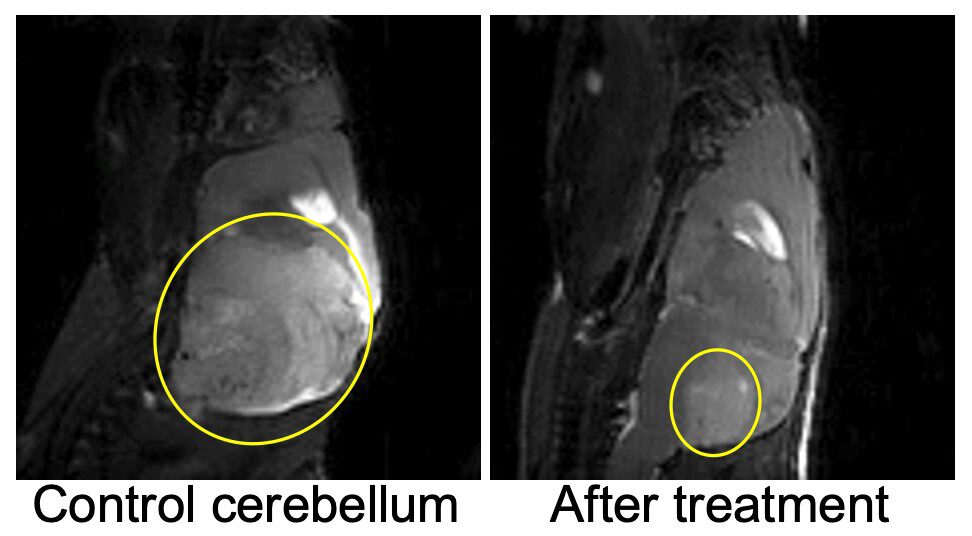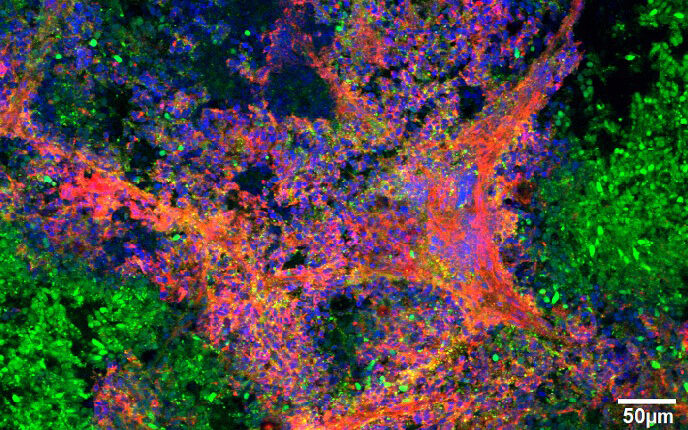
Lead author Dr. Jinhwan Kim
Nanoparticles Target Pediatric Cancer Tumors
September 14, 2020
Treatment of medulloblastoma, the most common malignant childhood brain tumor, includes surgery, whole brain and spine radiation, and chemotherapy, which leads to serious side effects, including profound neurocognitive deficits. In particular, the sonic hedgehog subtype of medulloblastoma, which represents approximately 30% of medulloblastoma, is associated with treatment failure and poor outcome in older children and those with metastatic disease.
In a recent paper published in The Proceedings of the National Academy of Sciences (PNAS) titled “Engineered biomimetic nanoparticle for dual targeting of the cancer stem-like cell population in sonic hedgehog medulloblastoma,” YongTae (Tony) Kim, Associate Professor in the George W. Woodruff School of Mechanical Engineering at the Georgia Institute of Technology discusses biomimetic nanoparticle technology for advanced targeted drug delivery to medulloblastoma cells as a promising alternative strategy to treat the pediatric tumor.
Kim, whose research primarily leverages biomimetic microengineering and nanotechnology for the development of therapeutics for neurological diseases including Alzheimer’s and brain tumors, started the research project in 2014 in collaboration with Dr. Tobey MacDonald, Professor at Emory University School of Medicine and Director of the Pediatric Neuro-Oncology Program at Aflac Cancer and Blood Disorders Center.

MRI scans of medulloblastoma-bearing mice brain 5 months after the intravenous injection of saline (control cerebellum) and eHNP-A1-CD15-LDE225 (after treatment).
When I met patient families of this fatal hard-to-cure pediatric tumor after I gave a seminar at Emory and Children’s hospital of Atlanta, I could not help deciding to do something to support the kids,” said Kim. “It is a blessing for engineers to help patients, which motivated me to work on these challenges.
Current treatment strategies that utilize whole brain radiation therapy result in deleterious off-target effects on the normal developing childhood brain. Most conventional chemotherapies remain limited by ineffective blood-brain barrier penetrance. These challenges signify an unmet need for drug carriers that can cross the blood-brain barrier and deliver drugs to targeted sites with high drug-loading efficiency and long-term stability.
Kim’s research demonstrates that innovative bioinspired nanotechnology able to incorporate multiple agents into one nanocarrier can provide a solution to notorious brain tumors with minimal adverse side effects.
The study shows that an engineered biomimetic nanoparticle decorated with a targeting ligand and loaded with a sonic hedgehog inhibitor maintains its stability in the circulation, crosses the blood-brain barrier, and delivers drug molecules to the cancer stem-like cell population in sonic hedgehog medulloblastoma. Leveraging the natural capabilities of high-density lipoprotein, the nanoparticle enables the facilitated and targeted cellular uptake of drugs and receptor-mediated intracellular cholesterol depletion in medulloblastoma cells.
“This successful in vivo validation of our biomimetic nanoparticle performance will bring up a new viable strategy by which to effectively deliver many other drug candidates, which have been reportedly unable to cross the blood-brain barrier, have low bioavailability, or off-target effects for the treatment of brain tumors including medulloblastoma,” said Kim.
Kim, in collaboration with Dr. MacDonald, plans to apply the biomimetic nanotechnology to test many other potential therapeutic agents for the treatment of brain tumors in the near future. They will also extend their approach and apply for opportunities focused on other brain diseases including neurodegenerative diseases.

Image of GFP-expressing medulloblastoma organotypic tumor slice culture upon the treatment of eHNP-A1-CD15-LDE225. eHNP-A1-CD15-LDE225 exhibited localization in the perivascular niche ares of tumor tissues. Blue represents nucleus; green represents SmoA1 medulloblastoma cells; red represents eHNP-A1-CD15-LDE225.
This work was supported by the National Institutes of Health (NIH) National Institute of Neurological Disorders and Stroke (NINDS) R21NS091682 (Y.K.), NIH Director’s New Innovator Award 1DP2HL142050 (Y.K.), National Institutes on Aging (NIA) R21AG056781 (Y.K.), and Ian’s Friends Foundation (T.J.M.). We also thank the core facilities at the Parker H. Petit Institute for Bioengineering and Bioscience, and the Institute for Electronics and Nanotechnology at Georgia Institute of Technology, a member of the National Nanotechnology Coordinated Infrastructure, which is supported by the National Science Foundation (ECCS-1542174).
